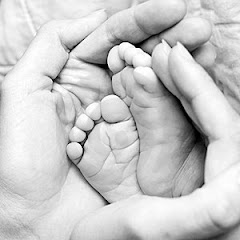1.HAMMERTOES. While wearing this type of loose fitting shoe the toes are forced to contract to "grip" the shoe in order to prevent it from falling off the foot. This sustained contraction of the toes leads to tendon imbalances which can cause contracted/hammertoes.
2. BUNIONS. Often times the foot will overpronate when not wearing supportive shoes or walking barefoot. Overpronation in its simplest of terms refers to a "rolling inward" of the feet. If this is not controlled over extended period of time tendon imbalances will occur which cause the great toe to move toward the 2nd toe. This drifting of the toe leads to bunion formation.
3. HEEL PAIN. The lack of support while wearing flip flops often lead to heel pain. This is most commonly caused by excessive pull of the plantar fascia on the bottom of the foot. The plantar fascia is a soft tissue structure which is partially responsible for helping to maintain the arch. If there is lack of support to the shoe, the fascia undergoes excessive pull which creates inflammation and pain where it inserts on the heel.
4. ARCH PAIN. As mentioned with heel pain, the lack of support to the shoe often will cause inflammation of the plantar fascia. However, instead of the heel , the scource of pain will be located at the arch. The plantar fascia begins at the heel but fans out to the forefoot. Lack of support will often cause excessive stretch to the fascia along the arch thus leading to pain.
5. TIBIAL TENDON PAIN. Excessive use of flip flop type shoes can lead to pain along the medial or "inside" of the ankle. The medial side of the ankle is the same side the great toe is located. The tibial tendon is what is primarily responsible for maintaining the arch. Shoes which lack support and provide no pronation control will force the tibial tendon to work excessively to maintain the arch. This can lead to fatigue, inflammation and pain.
6. NUMBNESS. In the same anatomic area as the tibial tendon lies the tibial nerve. This is the major scource of innervation to the bottom of the foot. Shoes which lack support and pronation control lead to excessive compression of this nerve which can lead to numbness and pain. This condition is referred to as tarsal tunnel syndrome.
7. CALLUSES. Because there is no back to the shoe and no sock to protect the skin, the sole of the foot undergoes excessive shear forces when walking. These forces lead to excessive callus and fissure formation most notably to the heel area.
8. ANKLE SPRAINS. When a shoe such as a sandal or flip flop has no type of back to it, (the back of the shoe is referred to as the shoe "counter") there is an increased propensity for ankle sprains when walking on uneven terrain.
9. KNEE PAIN. Over pronation in the feet causes internal rotation of the femur (thigh bone). This internal rotation affects the alignment of the knee joint creating asymmetry in motion often leading to pain.
10. LOW BACK PAIN. As mentioned with knee pain, internal rotation of the femur also affects the aligment of the low back( sacro -illiac joint). In other words, pronation of the foot leads to internal rotation of the femur which causes abnormal alignment of sacral illiac joint thus leading to low back pain.
It is not fair to say that all these conditions are only associated with flip flops. Any type of non supportive or open back type shoe can lead to some of these problems. It should also be noted that some individials are less inclined to suffer these symptoms than others. People with excessively high arched feet or excessively flat feet or certainly more vulnerable than those with a more neutral type of foot. If your foot is more on the flat side then a shoe with a firmer type sole with less flex and a firm counter would be a better choice. If you have a higher arched foot then shock absorption is more important. As always, look for shoes with good arch support no matter what your foot type. If an individual is planning a day with extended weightbearing or walking on uneven terrain, flip flops should be avoided. If one develops any of these conditions while wearing flip flops, limit their use. If symptoms do not improve seek medical attention from a trained professional.


